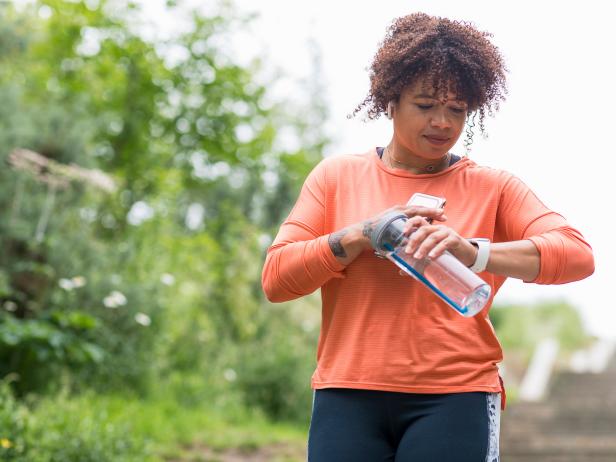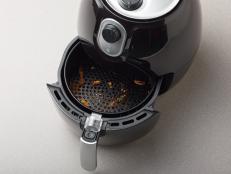How Much Exercise Do You Really Need Per Day?
Getting a healthy amount of movement each day is easier than you might think.

SolStock/Getty Images
Keep. On. Moving. A good mantra for all of us no matter how much additional time we are spending at home these days. Believe it or not, there are actually some solidly established activity guidelines to help support good health. We'll break down what those guidelines are, and offer some ideas to help offset the extra down-time that comes with working from home, virtual schooling and, frankly, just being cooped up.
How Much Exercise Does Your Body Need?
The Department of Health and Human Services (DHHS) has well-defined guidelines for physical activity and reports that most Americans are nowhere near meeting them. A report published in 2018, found that only 26% of men, 19% of women and 20% of adolescents are getting enough activity. (This was long before the pandemic of 2020.)
The foundation of DHHS activity guidelines for adults is about 30 minutes of moderate activity per day, most (if not all) days of the week. That 30-minute goal can even be broken up into smaller sessions throughout the day. Those who want to formulate an exercise regimen should aim for a weekly total of 150 minutes of moderate-to-vigorous activity, meaning your heart rate needs to increase during these exercise bouts, and two days of strength training a week. Kids ages six to 17 years should aim for one hour per day and should also aim for targeted exercise combining aerobic and strength training at least three days per week. If you have existing medical conditions, check with your doctor before committing to more intense exercise.
Health Benefits of Frequent Exercise
Getting more activity can benefit your health in several ways. And the best part – some of the benefits come from even the smallest amount of activity (like one session). Just one bout moving helps manage stress and promotes better sleep quality. More robust benefits come from a long-term commitment to regular movement. More exercise is linked to better brain health and reduced risks of certain types of cancer. Regular exercise can also help with weight loss and reduced risk of chronic illnesses including hypertension and type-2 diabetes. Exercise has also been linked to improved cognition for those with neurological conditions including dementia, Parkinson’s, multiple sclerosis and ADHD.
How to Get More Exercise In
The cold winter months combined with fewer opportunities to exercise in public spaces and gyms means Americans will likely be sitting around too much this time of year. Here are five ways to help hold yourself accountable to getting more activity.
Schedule Exercise
Just like any other important commitment, you need to schedule and make time for exercise. Find something you enjoy doing instead of forcing yourself into an activity you don’t like and will be harder to stick to.
Stand Up At Least Once Per Hour
Many of us are home more and, without even realizing it, spending an entire day sitting at the computer. Set a timer and make sure to get up and stretch at least once per hour. Simple stretches with body weight, bands or a foam roller can help increase blood flow, benefit metabolism and prevent muscles from getting overly tight.
Exercise as a Household
Get the members of your household involved. Challenge everyone to move more, take walks, ride bikes and play games using simple household items such as a deck of cards. Assign exercises like push-ups, sit ups, air squats and high knees to each of the face cards and draw from the deck to see how many exercises everyone has to do. For examples, drawing the 8 of clubs means 8 reps of the assigned exercise. Flip through the entire deck for a surprisingly challenging working.
Break Up Your Workout
As mentioned above, that 30-plus minutes of activity doesn’t need to be continuous. If 10 minutes at a time is all you can spare, that works too — and might be an easier way to make it happen.
Track It
Fitness trackers and step counters may provide the spark of motivation many folks need to be more active. Aim for at least 10,000 steps a day and if those steps have to come from inside your house or out in the backyard, that counts too.
Dana Angelo White, MS, RD, ATC, is a registered dietitian, certified athletic trainer and owner of Dana White Nutrition, Inc., which specializes in culinary and sports nutrition. She is the author of four cookbooks First Bites: Superfoods for Babies and Toddlers, The Healthy Air Fryer Cookbook, The Healthy Instant Pot Cookbook and Healthy Quick and Easy Smoothies.
*This article was written and/or reviewed by an independent registered dietitian nutritionist.
Related Links:
































